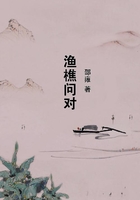"On account of the Gold Mania in California I kept the search for gold and other precious metals as much out of view as possible, scarcely allowing it to be a matter of conversation, much less of actual search. Yet, enough was ascertained to convince us that the whole region was teeming with the precious metals. We everywhere saw the remains of mining operations, conducted by the Spaniards, and more recently by the Mexicans."The report enumerates at considerable length the various localities examined by Col. Emory's party, and others, of which there could be no doubt.
In view of these authorities, it is hoped that those who will not believe upon any evidence, will be content in their own incredulity. The most authentic reports of these immense mineral resources have been used as authorities against their existence.
The authors of these denials either have never read what they pretend to quote, or think no one else has. The Hon. T. Butler King, who was the first to reveal to an incredulous public the wonders of the California gold mines, has had the singular good fortune to be also among the first to publish correct and authentic information relating to the silver treasures of Arizona. His report upon the resources of the new Territory has all the charm to the reader that his California report had, and its brilliant predictions will be as fully realized. To Gray and Emory is the country most indebted for the earliest and most important discoveries.
The agricultural resources of Arizona, are sufficient to sustain a large mining population, and afford abundant supplies for the great immigration which will follow the development of its mineral resources. The whole valley of the Gila, more than four hundred miles in length, can be made with proper exertion to yield plentiful crops. The Pimos Indians, who live in villages on the Gila, one hundred and seventy miles from its mouth, raise large crops of cotton, wheat, and corn, and have for years supplied the thousands of emigrants who traverse the Territory en route to California. These Indians manufacture their cotton into blankets of fine texture and beautiful pattern, which command a high price. They also grind their corn and wheat, and make bread.
In fact, the Pimos realize in their everyday life something of our ideas of Aztec civilization. A town will probably grow up just above the Pimos villages, as there is a rich back country, and the streams afford a valuable water power for running mills.
The valley of the Santa Cruz traverses the territory from South to North, sinking near the town of Tueson, and probably finding its way to the Gila, as a subterranean stream. This valley, of the richest land, is about one hundred miles long, in many places of great width, and has on each side of it many rich valleys of limited extent, watered by streams from the mountains, which flow into the Santa Cruz. The valleys and Ranches of Arivaca, Sopori, Calabazas, and Tueson, are those at present most thickly settled.
These produce all the fruits known to a Southern clime--grapes, wheat, corn, and cotton in great abundance. The San Pedro river and valley is also one of great richness, and is reported by Lieut. Parke as capable of sustaining a large population. The Valle de Sauz, still farther East, more limited than the San Pedro or Santa Cruz, can be made available for a considerable population. The Mimbres River also can, by a small outlay, be made to irrigate a large surface and supply a moderate settlement. The various springs laid down by Gray, Emory, Parke, and Bartlett, will all afford water for small settlements, and their supply can be much increased by a judicious outlay of money. The Rio Grande valley is very rich, and in places of great width. The Mesilla valley already contains a population of about five thousand souls, and there is ample room for many more.
If, as proposed, the Northern boundary of the Arizona Territory should enclose the Northern branches of the Gila, an agricultural region will be opened to settlement sufficient in itself to sustain the population of an immense agricultural State. Col.
Bonneville, who is now at the head of a large force exploring this region, writes to the Secretary of War that it is the finest country he has ever seen, "valleys capable of sustaining a population of twenty thousand each, teeming at every step with evidences of an immense population long ago-and an ancient and superior civilization." The Hon. John R. Bartlett says of the "Salinas," one of the Northern branches of the Gila, that it alone will supply food for a great State. It must be recollected, in this connection, that the great mineral wealth of Arizona will call for and amply repay for the redemption and expensive cultivation of all the available lands, and that irrigation produces immensely greater crops than the other method of planting. Throughout the whole of Utah, irrigation has been resorted to with the greatest success. The soil in Utah, in no place that the writer saw it, could in any way be compared to that of the bottom lands of Arizona.
Captain Whipple in his valuable report of exploration for the Pacific Railroad, published by order of Congress, crossed the upper part of the region alluded to, and which is watered by the Rio Verde and Salinas. He fully sustains me in my remarks on those rich valleys.















